West Yorkshire's famous Emley Moor TV transmitter is making waves analysing water usage for companies - and it could save you money on your bills
and live on Freeview channel 276
The huge Emley Moor Tower, standing at 1,047ft, has loomed large over the horizon helping to beam television shows into homes across the region for decades.
But at the station and offices underneath the landmark there’s quite a different activity going on that’s making waves in the world of water data analysis rather than signals for our small screens as site owner Arqiva evolves its offering.
Advertisement
Hide AdAdvertisement
Hide AdThe site is being deployed as the management operation centre for its burgeoning business of smart water metering which could save millions on bills
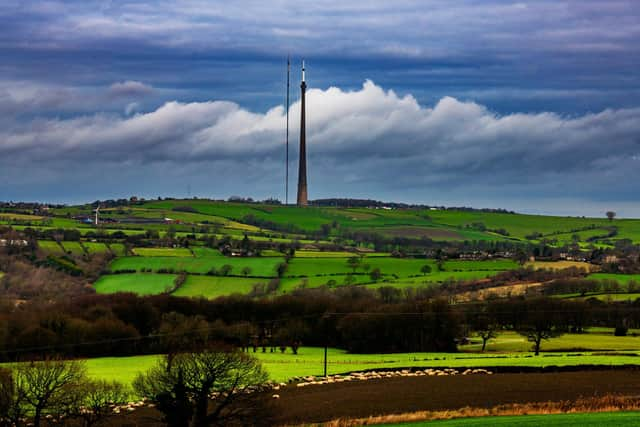

Water companies across the UK are at different stages of rolling out smart water meters to customers, which operate in a similar way to energy smart meters.
The AMI - or Advanced Metering Infrastructure - devices better track water usage within a household by providing hourly breakdowns.
They continually collect and send data over a communications network which is then shared with water companies and the customers themselves. This helps inform and incentivise households to cut usage and also allows companies to quickly identify leakage problems when unusually high levels of usage are recorded.
Advertisement
Hide AdAdvertisement
Hide AdArqiva’s role is to provide the communications network sending the information to relevant parties. It does this job for more than one million meters across Thames Water and Anglian and has recently started working with Northumbrian Water’s operations in Essex.
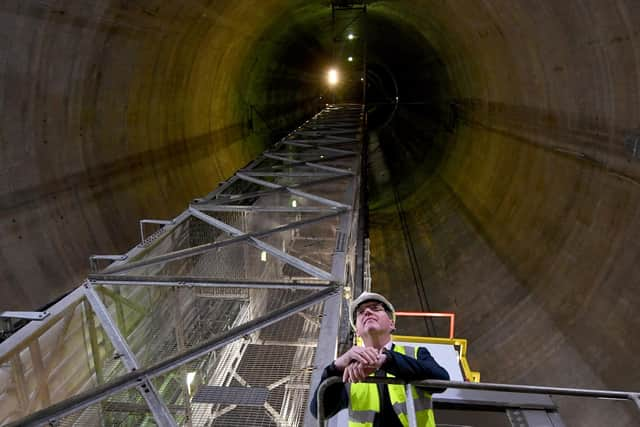

It does not currently work with Yorkshire Water, which is at an early stage of an AMI rollout. Yorkshire Water announced recently that Hull firm Connexin has been selected to deliver its AMI framework contract, with an initial 30,000 meters being rolled out over the next five years.
Larger rollout phases are planned later across the region - in common with plans from other water companies nationally; offering a major opportunity to companies like Arqiva and other potential network providers.
Peter Baker, Executive Director for Utilities for Arqiva, said: “All the resources we use to manage effectively the smart metering programmes throughout the UK reside here at Emley Moor.
Advertisement
Hide AdAdvertisement
Hide Ad“What you’ll see is a smart meter sat typically in a pit outside the house, normally about 60cm below the ground. That talks to a little communications device that sits underneath the lid of that pit.
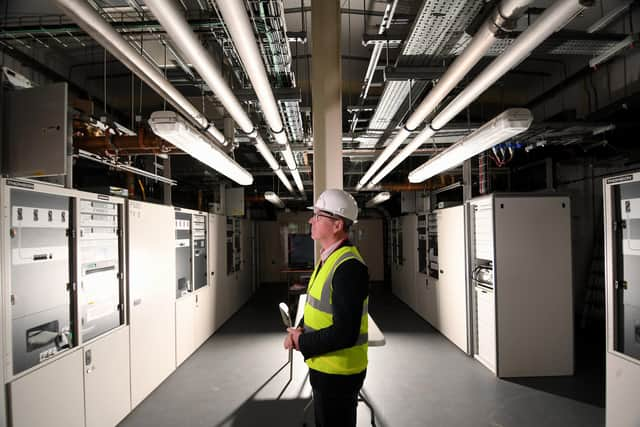

“This is a smart meter which communicates pretty much in real time with what we have; the Arqiva mast network of which there are hundreds located within the region of that specific water company. They are constantly talking to each other.
“The smart meter is relaying consumption data on an hourly basis across that network and then we disseminate that data across our systems to the range of water companies we provide services to.
“All water companies from 2025 to 2030 have submitted very ambitious plans to roll-out smart metering in all their regions.”
Advertisement
Hide AdAdvertisement
Hide AdThanks to their existing know-how and infrastructure with TV transmission masts across the country, Arqiva claims it is in pole position to lead the rollout.
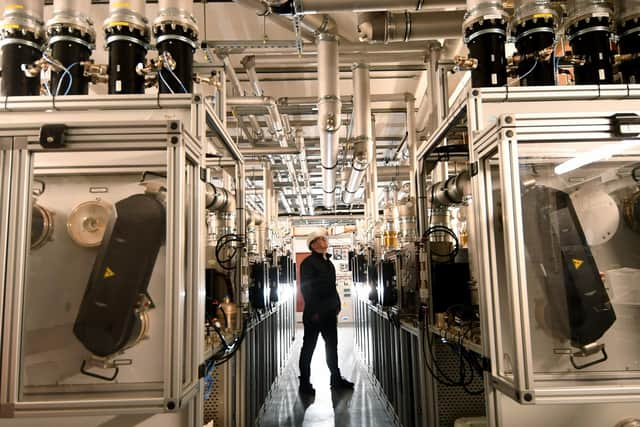

Arqiva uses its existing national network of TV masts to locate the technology for receiving and submitting water network data where possible, supplemented by a network of smaller sites to reach as many households as possible.
Craig Kelly, Broadcast Operations Manager at Emley Moor, added: “This is the national hub and Arqiva has invested millions in this site so nationally we can deliver. What is here is the management operation, the operation centre that manages both the utility space and the broadcast space.”
What that translates to in reality when it comes to the water smart meters is a bank of computers in a control room involving a team of 25 people assessing the data being received over the network.
Advertisement
Hide AdAdvertisement
Hide AdMr Baker added: “What we do is operate the network to allow the data to be transmitted. We don’t look at what’s inside, that is all encrypted. The data will find its way into the data centre and is fed back to the water company for their own processing and purposes.”
He says the company believes the rollout has multiple benefits and cites a Thames Water study claiming it was capable of cutting water usage for some customers by 17 per cent - the equivalent of a £166 per year annual saving on their bill.
“It is all about doing two things - firstly, identifying leaks. If between 2am and 4am, you are using five litres an hour you’ve probably got a leak and it is often a leaky loo but it could be from a tap. It enables the water company to prioritise where leaks are occurring and then get in touch with the consumer and tell them they have got a leak and if necessary, assist them to resolve that leak.
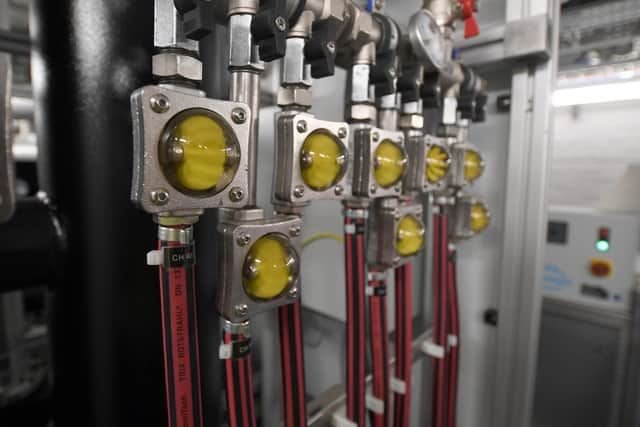

“Secondly, it is around having a customer engagement where you can discuss with them their usage of water and start making people aware of the amount of water they use and looking at ways to be more efficient with your water usage - turning off the tap when you brush your teeth, slightly shorter showers, those kind of things.”
Advertisement
Hide AdAdvertisement
Hide AdWith widespread hosepipe bans in place across the country last year – including Yorkshire – and growing alarm about future water scarcity as a result of climate change, the technology is seen as a key weapon in preserving national supply.
“At the moment, about 25 per cent of water that is produced nationally is lost through leakage, about three billion litres per day. Around 25 per cent of that number is lost on the consumer side,” said Mr Baker.
.
“If you can reduce the leaks that happen in the house, it plays a large part in preserving water within the system. As population growth is occurring and climate change is driving scarcity of water, it is incredibly important to preserve the water that we have got and make the use as efficient as possible.
“What we are trying to do as a nation is make people more aware of the amount of water they use. Typically it is 145 litres per day per person. Yorkshire is 129 - they actually lead the country in terms of lowest water usage.
Advertisement
Hide AdAdvertisement
Hide AdBut we need to drive that number much further down to 110 litres or even lower over the longer term.
“Unless you are using meters with data to provide insights and intelligence to your customers and show the improvements, it will be very hard to drive that number down to a lower level. So metering is essential to achieving that aim.”
But smart water metering is not without its critics. Concerns have included those with higher water usage facing bigger bills, the volume of data being collected on customers and also some fears about potential health implications.
However, Public Health England has advised that radio waves produced by smart meters do not pose a risk to health, with Thames Water saying their devices emit far fewer radio waves than a mobile phone.
Advertisement
Hide AdAdvertisement
Hide AdMr Baker admitted you get a “full spectrum” of reactions to the idea of having a smart water meter installed but said it was generally welcomed.
“If you are one or two people in a three or four bedroom house, the chances are you are going to end up paying a lot less for your water.”